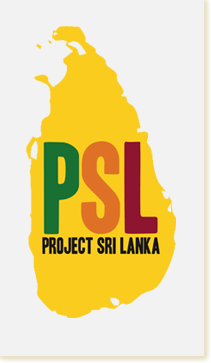Handunugoda tea estate – Day 5
A thought-provoking day for the cinnamon team! Having decided on the thrust of our report, we decided to head to a larger tea plantation this morning, for a contrast with the medium-sized cinnamon plantations we have already seen.
After breakfast, we flagged down two tuk-tuks (or ‘autos’ as they’re called in South Asia, being short for auto-rickshaw) to take us to the Handunugoda tea estate about 40 minutes away. Some robust negotiation on the cost ensued, and 10 minutes of haggling saw us agree on a reasonable price (although I suspect we still paid over the odds!) Price agreed, we set off for the estate.
On arrival we were greeted by the plantation manager who gave us a history of the estate and a tour. We were shown the various types of tea grown on the estate (including Virgin White Tea, sold at $8.50 per 5g!), as well as rubber trees (and how they were tapped) and cinnamon. The plantation also grows cloves, cardomoms and other spices. Interestingly, they process and utilize nearly all of their spices in their own teas, with any surplus being rare. When there is a surplus, it is sold on the market.
We were then served 2 types of tea, oolong and black, with cake, on the verandah of the owner’s bungalow in the middle of the plantation – we could have been back in colonial times! We continued our interesting conversation with the manager, covering areas such as labour conditions and the increasing power of trade unions and the trends in the tea and spice markets.
Following this, we were shown the tea factory, where tea is dried and sorted, amongst other things. It was interesting to note that much of the machinery was centuries old, and was the machinery brought across by the British in the 18th century. The manager informed us that while many plantations used modern machinery, they preferred to stick with the traditional machines as they were lower maintenance – they rarely, if ever, broke down, compared with modern machines which need constant attention. We also observed some cinnamon peelers and the cinnamon drying process, which was similar to that which we had observed elsewhere.
A tea tasting followed, where we discovered such blends as the plantation’s own ‘suicide blend’, treated with whisky, as well as various white, green, oolong, pekoe and other teas. All 4 of us bought some tea to take home with us, following a very informative trip.
In the afternoon we met with Dennis Fox, a British national who owns a 23 acre plantation growing cinnamon, tea, rubber and coconuts. It was interesting to get his perspective on the cinnamon industry and Sri Lanka as a whole, being a foreigner who has resided in the country many years. The discussion with Dennis was wide-ranging, covering workers conditions, wages, unionization, the culture, barriers to doing business in the country, local views on foreign ownership, the positive impact he brings as a foreign owner to his local community, his experiences in Africa and Malaysia compared to Sri Lanka and so on. The information we gathered corroborated some earlier information whereas other insights contradicted some of what we learned elsewhere, suggesting further research is required in those areas.
A highly informative day with a vast amount of information gathered and things to think about, contemplate and reflect upon. As I type this the sun is setting over Weligama, and so I think contemplation is best achieved over a Lion beer, catching up with the other groups who are trickling back into the hotel following their own action-packed days!
